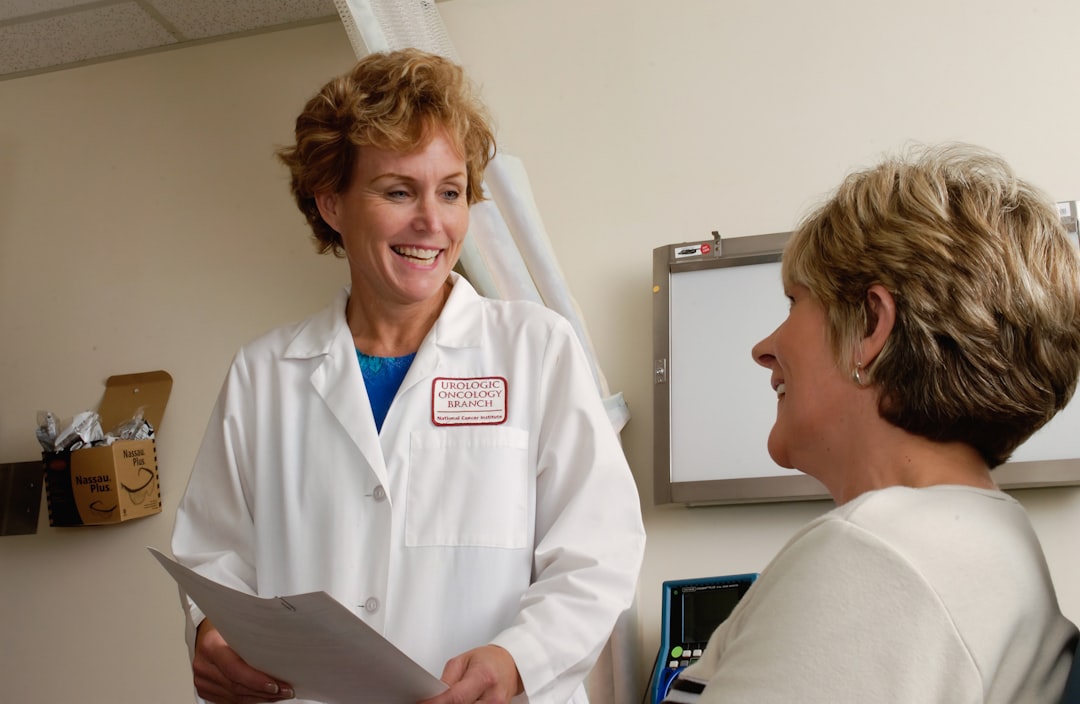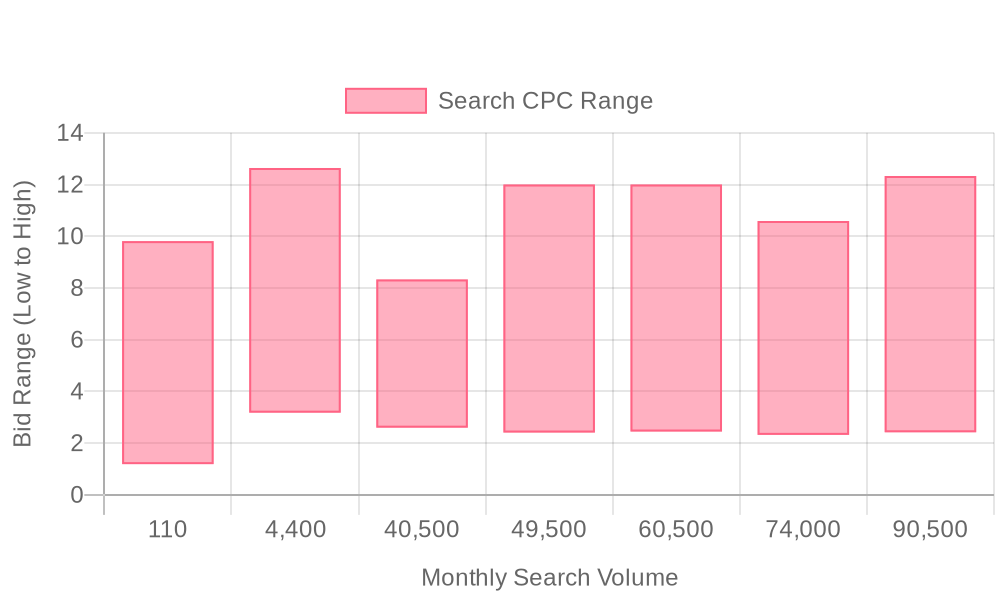
Supercharge your lead generation with a FREE Google Ads audit - no strings attached! See how you can generate more and higher quality leads
Get My Free Google Ads AuditFree consultation

No commitment
Supercharge your lead generation with a FREE LinkedIn Ads audit - no strings attached! See how you can generate more and higher quality leads
Get My Free Google Ads AuditFree consultation

No commitment
Supercharge your lead generation with a FREE Meta Ads audit - no strings attached! See how you can generate more and higher quality leads
Get My Free Google Ads AuditGet My Free LinkedIn Ads AuditGet My Free Meta Ads AuditFree consultation

No commitment
Supercharge your lead generation with a FREE Google Ads audit - no strings attached! See how you can generate more and higher quality leads
Get My Free Google Ads AuditFree consultation

No commitment
In today's complex marketing landscape, effective B2B marketing requires a strategic mix of both online and offline channels working in concert. Online channels like social media build digital brand awareness, email marketing nurtures ongoing relationships, and SEO drives organic visibility. Meanwhile, offline channels such as trade shows generate face-to-face connections, direct mail creates tangible touchpoints, and industry publications establish thought leadership. Within this integrated ecosystem, Google Ads plays a critical middle-funnel role by capturing high-intent prospects at the exact moment they’re searching for solutions—effectively bridging the gap between broader awareness efforts and your sales process. For medical service providers, identifying and targeting decision-makers at their precise moment of need, such as after a trade show or in response to direct mail, represent powerful opportunities. Additionally, industry-specific terminology and technical specifications unique to the medical field allow for precise targeting. Measuring ROI holistically from click to consultation to closed deal, connecting digital touchpoints with offline interactions, is essential. Moreover, Google Ads can complement other channels through remarketing to trade publication readers, event attendees, and digital audiences alike, providing a comprehensive view of the customer journey.

In the healthcare sector, qualified lead generation hinges on precision, compliance, and the ability to adapt to changing patient needs. Modern marketing teams in this space must unify data across channels to avoid missing high-value opportunities, particularly as digital competition heightens. Explore in-depth articles on marketing measurement to help your team stay ahead in lead generation.
Integrating Google Ads for Medical Service Providers enables B2B marketers and local operators to capture in-market leads at the moment of intent, while advanced data solutions like Sona can identify which campaigns drive genuine engagement. Medical service providers leveraging a data-driven approach can navigate industry regulations and maximize ROI by continuously optimizing campaigns and syncing enriched lead data back into downstream platforms.
This playbook equips B2B marketers, healthcare service providers, and local medical operators with a proven framework to generate qualified leads and maximize marketing effectiveness in a competitive landscape. As untracked, high-value prospects become increasingly costly to miss, actionable insights and unified data become essential for success. To experience these strategies in action, get started for free with Sona.

Medical service providers face a landscape where reaching the right professionals and decision-makers is both urgent and complex. Google Ads delivers an immediate way to connect with doctors, healthcare administrators, and medical coordinators precisely when they are actively researching or seeking solutions, eliminating much of the guesswork that comes with identifying anonymous web traffic.
For high-margin services such as telemedicine consultations and specialized treatments, Google Ads enables clinics and practices to capture demand from prospects not yet in their funnel. This agility is critical during patient surges or when launching new offerings, allowing providers to respond faster than competitors and secure valuable new appointments. Providers looking to maximize campaign impact can benefit from real-time audience segmentation and should also review official Google Ads healthcare policies to ensure compliance and avoid ad disapprovals.
The ability to rapidly pivot campaign budgets and creative toward in-market audiences ensures lead capture happens at the earliest intent signal, turning fleeting interest into booked consultations. By leveraging integrated data analysis, every click and conversion can be tracked from ad engagement through to patient acquisition and downstream revenue. This closed-loop approach gives marketing and revenue teams clear attribution, making it easier to justify ad spend and optimize future Google Ads medical advertising efforts.
Additionally, with robust targeting and geo-fencing capabilities, providers can extend their reach into rapidly growing metro areas or underserved communities. This supports expansion goals while providing actionable insights into which channels and tactics are driving real-world outcomes across the healthcare journey. Combining audience data and real-time intent signals within a unified platform elevates campaign precision, supporting smarter decisions on where to invest next for Google Ads healthcare marketing. To see how this can work for your organization, get started for free with Sona.


Expanding reach in medical services requires more than repeating traditional marketing tactics. Identifying new growth channels begins with a strategic approach to uncovering untapped audiences and maximizing the impact of every marketing dollar.
Platforms that unify intent signals and real-time visitor data further elevate these tactics. By identifying previously anonymous site visitors and mapping their engagement across channels, medical service providers can refine Google Ads healthcare targeting dynamically. As leads progress through the funnel, audience lists update automatically, ensuring each ad dollar targets the most relevant prospects. This data-driven approach minimizes wasted spend and accelerates growth in competitive healthcare segments. For more on optimizing your approach, explore retargeting strategies tailored for medical advertising. To activate these growth strategies, get started for free with Sona.

Precision in audience segmentation is critical for medical service providers looking to maximize the impact of their Google Ads investments. Segmenting audiences according to the nuances of their journey—whether they represent hospitals, clinics, diagnostic centers, or specialized therapy services—ensures messaging is always relevant and actionable. This approach streamlines acquisition and retention by aligning digital outreach with the unique motives and needs of every healthcare segment. For more strategic insights, visit our B2B marketing blog.
For healthcare providers, robust audience segmentation is not just about campaign setup—it is the foundation for compliant, scalable, and high-performing Google Ads healthcare marketing. By syncing CRM and ad data, identifying high-intent prospects, and ensuring accurate conversion tracking, medical service organizations can confidently invest in strategies that deliver measurable growth and patient engagement. For more on optimizing these strategies, explore retargeting strategies tailored for healthcare marketing. To discover how you can implement these tactics with ease, get started for free with Sona.

| Industry | Keyword | Monthly Search Volume | Competition Level | Low Bid | High Bid |
| Medical Service Providers | medical service providers | 110 | LOW | 1.19 | 9.81 |
| Medical Service Providers | blue cross blue shield health insurance plans | 4400 | MEDIUM | 3.18 | 12.64 |
| Medical Service Providers | cigna health insurance | 40500 | MEDIUM | 2.6 | 8.33 |
| Medical Service Providers | primary care doctor near me | 49500 | LOW | 2.41 | 12 |
| Medical Service Providers | primary care physician | 60500 | LOW | 2.45 | 12 |
| Medical Service Providers | primary care physician near me | 74000 | LOW | 2.32 | 10.59 |
| Medical Service Providers | health insurance companies | 90500 | LOW | 2.42 | 12.33 |
Medical service providers operate in a highly regulated, competitive landscape where patient acquisition depends on timely, relevant outreach. An expertly crafted Google Ads strategy ensures your message reaches healthcare decision-makers during critical moments of need, driving both visibility and measurable patient inquiries. Explore more on Google Ads healthcare policy compliance to build campaigns that remain compliant while maximizing impact.
Proving the ROI of Google Ads medical advertising requires a data-driven approach that connects the dots across all campaign touchpoints. With the right keyword strategy and unified data foundation, medical service providers can confidently scale their outreach and demonstrate real, attributable impact on new patient acquisition. To see how you can optimize your campaigns, get started for free with Sona.
Targeted keyword development is foundational to strong Google Ads for Medical Service Providers. Start by clustering keywords around specific service types: diagnostics, treatments, and patient care. Localize your approach with city names, neighborhoods, and "near me" modifiers to ensure your ads surface for patients close to your facility. Incorporate long-tail phrases and common question-based queries, as these capture high-intent searches from individuals looking for specialized care or seeking answers to medical concerns. Consistently apply negative keyword filters to remove irrelevant traffic, optimizing spend and focusing on qualified leads.
Align your keyword lists with the vocabulary present in your content marketing strategy. This ensures ad relevance and improves click-through rates while supporting ongoing SEO efforts. When leveraging real-time audience data platforms, marketers gain the advantage of identifying which keywords drive engagement from high-value accounts, helping prioritize budget and refine targeting for maximum impact.
Effective ad copy in Google Ads medical advertising should immediately address industry-specific pain points in headlines. Reference patient concerns or operational challenges to forge a direct connection with searchers. Integrate trust markers, such as patient testimonials and certifications, to reinforce credibility and compliance—critical in healthcare advertising. For detailed guidance on regulatory requirements, refer to Google Ads healthcare policies. Encourage action by promoting time-sensitive incentives like free consultations or expedited appointment booking, catering to patients’ urgency. Use ad extensions strategically: call buttons, structured snippets, and service highlights provide a richer user experience and drive higher-quality interactions.
Consistency across channels is vital. Harmonize ad messaging with your broader social and email campaigns, ensuring patients encounter a unified voice at every touchpoint in their journey. Platforms that sync audience lists and messaging in real time empower teams to nurture leads with relevant, personalized outreach as they move through the funnel.
Landing pages for Google Ads medical practice campaigns must provide a seamless transition from search intent to conversion. Ensure a 1:1 alignment between keyword, ad, and landing page—each page should speak directly to the service or specialty highlighted in your campaign, such as cardiology, dermatology, or urgent care. Segment landing pages for each core offering, and supplement them with robust FAQs, testimonials, and trust badges to satisfy compliance requirements and build patient confidence. Clear, persistent CTAs—designed for both desktop and mobile—make it easy for visitors to book appointments or contact your staff.
Optimized landing pages should be directly integrated with your CRM and marketing automation systems. This connection ensures every inquiry is captured, routed, and nurtured without manual intervention, reducing lead leakage and delivering a higher conversion rate for your Google Ads healthcare marketing investment.
Continuous improvement separates average campaigns from top performers in Google Ads for Medical Service Providers. Track both micro (e.g., form fills, click-to-call) and macro conversions (e.g., appointment bookings, consultation requests) to build a complete attribution model. Implement smart bidding strategies such as Target CPA or Max Conversions, letting the platform optimize budget distribution for your most valuable outcomes. Regularly A/B test ad headlines, CTA placements, and landing page layouts to identify which combinations drive the best results. Import offline conversions—such as calls or in-person visits—back into your Google Ads account for a full picture of what drives ROI. For troubleshooting policy violations and disapproved ads, the Google Ads healthcare troubleshooting tool is a useful resource.
Unifying ad performance data with multi-channel insights enables better content creation and sharper attribution. Marketers armed with real-time feedback can adjust creative, allocate spend, and orchestrate campaigns that mirror the evolving needs of the healthcare market, ensuring every dollar contributes to measurable growth.
A robust digital presence sets leading medical service providers apart in a crowded healthcare landscape. High-performing organizations unify audience, campaign, and CRM data to drive precise, compliant, and scalable growth across Google Ads and broader digital channels.
Effective execution of Google Ads for medical service providers requires continuous optimization rooted in unified, real-time data. By connecting conversion tracking, CRM systems, and dynamic audience management, marketers bridge the gap between ad spend and patient outcomes, driving measurable growth while maintaining strict healthcare compliance and data privacy standards. This integrated approach unlocks new demand, maximizes patient value, and future-proofs digital marketing strategy. To experience these capabilities firsthand, get started for free with Sona.
In conclusion, effectively utilizing Google Ads for medical service providers is an essential strategy for reaching the right audience while adhering to industry standards. By understanding Google's advertising policies, setting up well-targeted campaigns, and implementing best practices, medical professionals can enhance their visibility and patient engagement.
Throughout this article, we've explored the challenges of navigating compliance in healthcare advertising, outlined key strategies for optimizing Google Ads campaigns, and highlighted the importance of a data-driven approach to attract and retain patients. Such insights are critical for achieving sustainable growth and maximizing marketing efforts in the healthcare sector.
Imagine transforming your online presence and successfully connecting with patients who need your services. By taking actionable steps based on the insights shared, you can elevate your healthcare marketing strategy, ensuring your practice stands out in a competitive marketplace.
Ready to take your advertising efforts to the next level? Start for free to experience our platform and its capabilities today. Together, let's drive meaningful engagement and results for your medical services.
To set up Google Ads for your medical practice, start by building targeted keyword lists, develop compelling ad copy, design effective landing pages, and implement data-driven optimizations to ensure compliance and maximize ROI.
Google Ads policies for healthcare providers involve compliance with regulations and guidelines specific to healthcare advertising, which can be reviewed in detail on the official Google Ads healthcare policy page.
You can target specific geographic areas using advanced geo-targeting features, which allow you to focus ad budgets on regions with the highest patient demand or competitive opportunity.
Best practices include precision targeting, measurable ROI through conversion tracking, cross-channel synergy, and continuous optimization based on real-time data and audience insights.
Ensure HIPAA compliance by aligning landing pages with specific needs, featuring compliant messaging, and incorporating trust signals such as credentials and patient outcomes.
Budget considerations should be based on targeting high-intent keywords and audiences, optimizing spend on qualified leads, and continuously refining based on performance data.
Yes, there are restrictions on advertising prescription drugs, and advertisers must adhere to Google Ads healthcare and medicines policy to avoid ad disapprovals.
Certification involves understanding and adhering to Google Ads healthcare advertising policies and possibly applying for any required certifications or approvals as outlined by Google.
Success can be measured by tracking conversions from clicks to consultations, integrating offline attribution, and using real-time data to optimize campaigns for maximum ROI.
Google Ads allows advertising for various medical services as long as they comply with Google’s healthcare and medicines policy, which includes specific guidelines for different types of services.
Join results-focused teams combining Sona Platform automation with advanced Google Ads strategies to scale lead generation

Connect your existing CRM

Free Account Enrichment

No setup fees
No commitment required

Free consultation

Get a custom Google Ads roadmap for your business
Join results-focused teams combining Sona Platform automation with advanced Meta Ads strategies to scale lead generation

Connect your existing CRM

Free Account Enrichment

No setup fees
No commitment required

Free consultation

Get a custom Google Ads roadmap for your business
Join results-focused teams combining Sona Platform automation with advanced LinkedIn Ads strategies to scale lead generation

Connect your existing CRM

Free Account Enrichment

No setup fees
No commitment required

Free consultation

Get a custom Google Ads roadmap for your business
Join results-focused teams using Sona Platform automation to activate unified sales and marketing data, maximize ROI on marketing investments, and drive measurable growth

Connect your existing CRM

Free Account Enrichment

No setup fees
No commitment required

Free consultation

Get a custom Google Ads roadmap for your business
Over 500+ auto detailing businesses trust our platform to grow their revenue
Join results-focused teams using Sona Platform automation to activate unified sales and marketing data, maximize ROI on marketing investments, and drive measurable growth

Connect your existing CRM

Free Account Enrichment

No setup fees
No commitment required

Free consultation

Get a custom Google Ads roadmap for your business
Over 500+ auto detailing businesses trust our platform to grow their revenue
Join results-focused teams using Sona Platform automation to activate unified sales and marketing data, maximize ROI on marketing investments, and drive measurable growth

Connect your existing CRM

Free Account Enrichment

No setup fees
No commitment required

Free consultation

Get a custom Google Ads roadmap for your business
Over 500+ auto detailing businesses trust our platform to grow their revenue
Our team of experts can implement your Google Ads campaigns, then show you how Sona helps you manage exceptional campaign performance and sales.
Schedule your FREE 15-minute strategy sessionOur team of experts can implement your Meta Ads campaigns, then show you how Sona helps you manage exceptional campaign performance and sales.
Schedule your FREE 15-minute strategy sessionOur team of experts can implement your LinkedIn Ads campaigns, then show you how Sona helps you manage exceptional campaign performance and sales.
Schedule your FREE 15-minute strategy sessionOur team of experts can help improve your demand generation strategy, and can show you how advanced attribution and data activation can help you realize more opportunities and improve sales performance.
Schedule your FREE 30-minute strategy sessionOur team of experts can help improve your demand generation strategy, and can show you how advanced attribution and data activation can help you realize more opportunities and improve sales performance.
Schedule your FREE 30-minute strategy sessionOur team of experts can help improve your demand generation strategy, and can show you how advanced attribution and data activation can help you realize more opportunities and improve sales performance.
Schedule your FREE 30-minute strategy sessionOur team of experts can help improve your demand generation strategy, and can show you how advanced attribution and data activation can help you realize more opportunities and improve sales performance.
Schedule your FREE 30-minute strategy session





Launch campaigns that generate qualified leads in 30 days or less.
